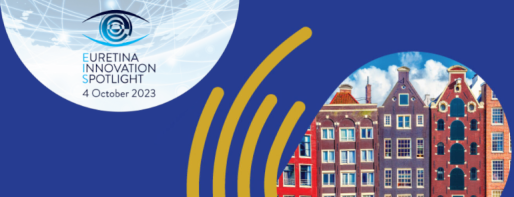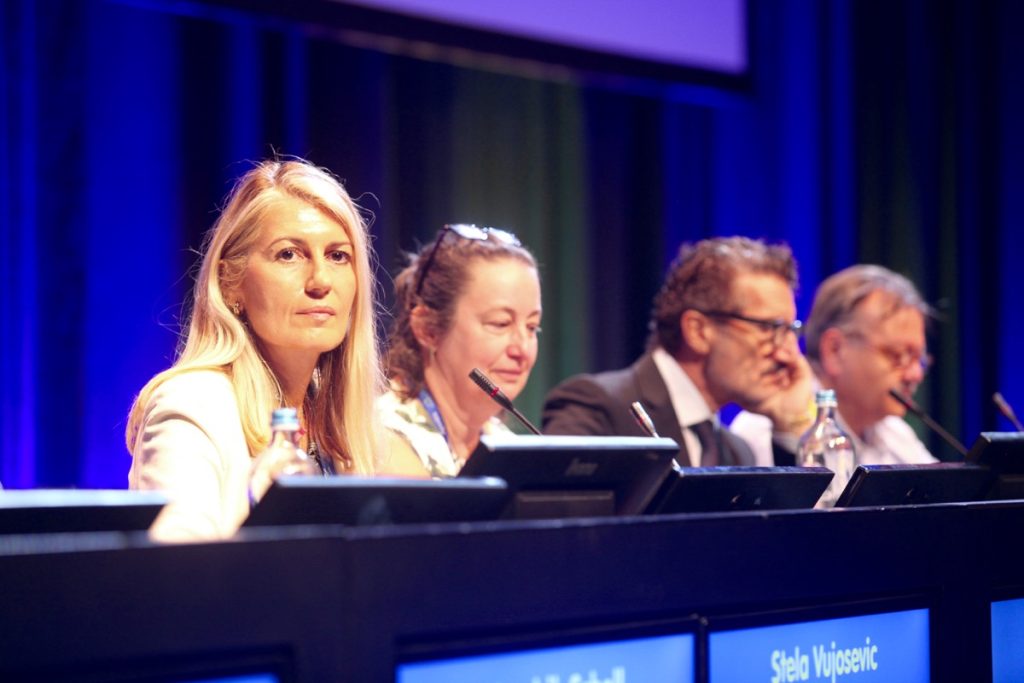Speakers at the Euretina session on imaging reviewed applications for a variety of retinal diseases.
Leading off the programme, Dr Pearse Keane (UK) discussed the application of artificial intelligence (AI) for analysing OCT scans and predicted that the biggest impact of the application of AI in AMD in the near future would be to enable clinical trial recruitment by identifying patients with characteristics that fit inclusion/exclusion criteria.
He presented work from a collaborative project that is exploring privacy protecting AI for clinical trial recruitment and demonstrated its potential power with an example showing how it was able to shortlist a large cohort of patients who could potentially be recruited into a clinical trial based on evaluation of stored OCT scans.
Also speaking about imaging in AMD, Jordi Monés (Spain) addressed controversies between morphology and function in eyes with dry disease and proposed that the failure of clinical trials to demonstrate a visual acuity benefit for treatments that appeared to have an effect on morphological progression could be overcome by a more granular approach to disease classification based on imaging characteristics.
Dr Monés said that AMD is not just one disease, but being “too one-disease minded” has led to trials designed with very gross entry criteria. He put forth the idea that to reduce noise from the results of functional assessments, heterogeneity of outcomes could be reduced by narrowing the entry criteria or adjusting/stratifying for several key variables simultaneously. The parameters he proposed to consider included lesion size, percentage of fovea affected, lesion distance from the fovea, shape and multifocality, as well as phenotype, which would be defined by such characteristics as drusen-associated features, load of reticular pseudodrusen, and extent of photoreceptor damage beyond the retinal pigment epithelium.
Implementing imaging to improve the care of patients with diabetic eye disease was discussed by Stela Vujusoevic (Italy). She proposed the need for a new staging system for diabetic retinal disease that could be based on a variety of new imaging parameters, including taking into account the peripheral retina and neuropathic changes. In addition, Dr Vujusoevic suggested that applying AI to better evaluate specific imaging characteristics would help keep pace with ongoing developments in diagnostics and treatments.
Dr Hendrik Scholl (Switzerland) reviewed how different imaging techniques are being used in clinical trials investigating treatments for inherited retinal diseases. His examples included the use of imaging to assess the primary endpoints in pharmacotherapy trials of atrophic Stargardt disease and retinitis pigmentosa, the value of intraoperative OCT for guiding and confirming subretinal delivery of gene replacement therapy for X-linked retinitis pigmentosa, and an imaging-based approach determining foveal volume as a proxy for cone mass to identify patients who could be eligible for optogenetics therapy.
A role for AI was also the focus of the last presentation in the session given by Dr Tunde Peto (UK) who discussed how its application to interpret ophthalmic images could increase clinical research capacity throughout the world.
This session will be available on demand for all registered delegates.


